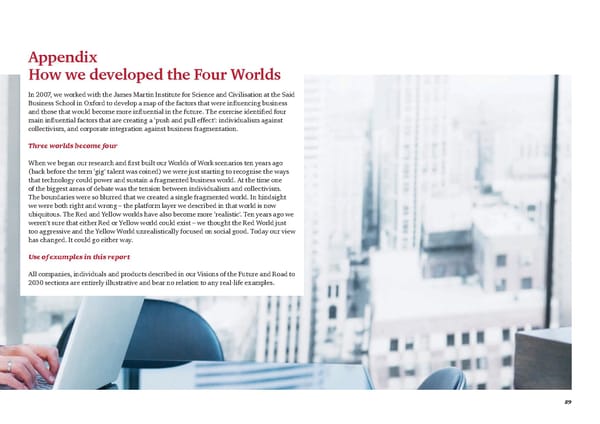39 Appendix How we developed the Four Worlds In 2007, we worked with the James Martin Institute for Science and Civilisation at the Said Business School in Oxford to develop a map of the factors that were influencing business and those that would become more influential in the future. The exercise identified four main influential factors that are creating a ‘push and pull effect’: individualism against collectivism, and corporate integration against business fragmentation. Three worlds become four When we began our research and first built our Worlds of Work scenarios ten years ago (back before the term ‘gig’ talent was coined) we were just starting to recognise the ways that technology could power and sustain a fragmented business world. At the time one of the biggest areas of debate was the tension between individualism and collectivism. The boundaries were so blurred that we created a single fragmented world. In hindsight we were both right and wrong – the platform layer we described in that world is now ubiquitous. The Red and Yellow worlds have also become more ‘realistic’. Ten years ago we weren’t sure that either Red or Yellow world could exist – we thought the Red World just too aggressive and the Yellow World unrealistically focused on social good. Today our view has changed. It could go either way. Use of examples in this report All companies, individuals and products described in our Visions of the Future and Road to 2030 sections are entirely illustrative and bear no relation to any real ‑ l ife examples.
 Workforce of the future Page 38 Page 40
Workforce of the future Page 38 Page 40